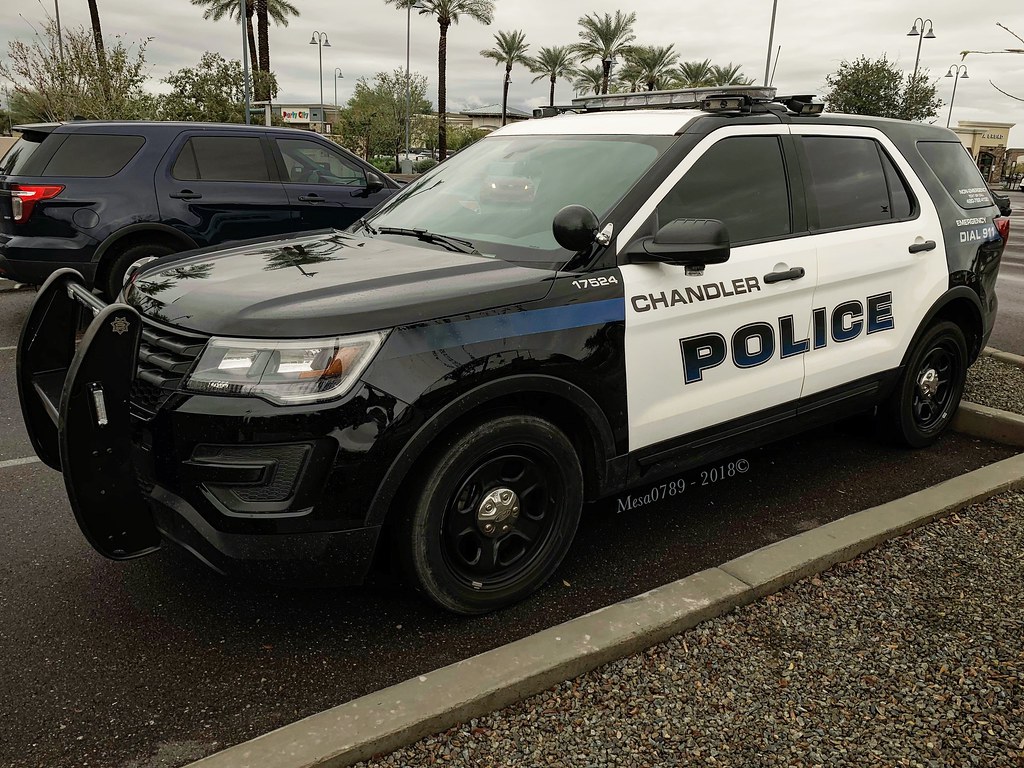By Matt Lutz.
Earlier this month, a new bill was introduced in the Arizona House of Representatives to restrict how and where people can film police activity in Arizona. HB 2319, sponsored by former police officer John Kavanagh, would make it illegal to video record police activity without the officer’s permission unless the camera is at least 15 feet away from the officer. Some believe this bill would help protect police officers from violence or distraction while they are responding to incidents. Others, however, harbor concerns about the bill’s potential to limit police accountability and facilitate abuses.
Establishing a Radius for Filming Police
The text of HB 2319 itself is relatively brief. It would add one new section to Title 13 of the Arizona Revised Statutes, the home of the state’s criminal law. Under this bill, persons filming police activity must either maintain a 15-foot distance from “where the law enforcement activity is occurring” or obtain the permission of the police officer. It contains an exception for situations where police activity is occurring on private property and within an enclosed structure. In this scenario, a person could film the officer from an adjacent room or from within the 15-foot radius, but the officer would maintain authority to make the person leave the area or stop filming if the officer determines that the person is interfering with the police activity or that the situation is unsafe.
Under the bill, a first-time violation of the law would be a petty offense. However, if the person filming is a repeat offender, the violation would be categorized as a misdemeanor. It would also be a misdemeanor if the person failed to comply with an officer’s verbal order to leave the area or stop filming.
Promoting Police Protection
On its face, the law purports to create additional protections for police officers. A specified radius would prevent bystanders from getting too close and interfering with police work. Such interference may cause more than annoyance to officers; it could also create safety issues. Bystanders filming an incident too closely could put themselves in danger, requiring officer intervention to prevent harm. Alternatively, bystanders could present a direct danger for officers if they became incited by a situation, reacted to something they saw, or were simply using filming as an opportunity to approach officers before attacking. As bill sponsor Kavanagh mentioned, “The officer doesn’t know if this is just a bystander taking a picture or if this is an accomplice or a friend of the person they are arresting and might attack them.”
Even if the bystander intends no harm toward the officers, standing too close could result in accidental injury to the bystander, the officer, or other parties involved in the incident. Increasing the space between bystanders and police activity could increase the safety of all involved, not only by lowering the risk of physical harm, but also by helping to diffuse tensions that close proximity would only heighten.
Constitutional Concerns
On the other hand, many have concerns about the effects the bill would have on police accountability. In the wake of George Floyd’s murder at the hands of police, which was documented in multiple videos captured by bystanders, many are suspicious of efforts to prevent or restrict the filming of law enforcement. Even in indoor situations, when the bill would generally allow filming from closer proximity or an adjacent room, the bill allows police officers to order those filming to leave the area. In a situation involving police abuse, the bill would allow that abuser to order others to vacate the area and prevent filming of the abuse.
In a recent example of the bill’s potential impact, a woman in Phoenix was criminally cited earlier this month for crossing a police line to intervene on behalf of a homeless man. However, after viewing the footage she captured of the incident, prosecutors opted to drop the charges. Had she not been filming, she believes that she would have gone to jail.
In addition to these practical and anecdotal concerns, many have constitutional concerns with the bill. Dan Barr, Of Counsel at Perkins Coie, noted that people have a constitutional right to film police in public. He believes that the bill represents a solution in search of a problem. The bill’s constitutionality has also been questioned by Paul Bender, Dean Emeritus at ASU Law, as well as the ACLU.
For his part, Kavanagh has plans to amend the bill in various ways, including an addition that would explicitly permit those directly involved in the incident to film police officers. He has also maintained an openness to other revisions in an effort to ensure the bill would protect both officers and those filming the incidents. Even with these revisions, however, it seems uncertain whether the bill would survive constitutional challenges.
The Future of HB 2319
These potential constitutional challenges are all theoretical unless and until the bill is actually passed by the legislature and signed into law, hurdles which are themselves uncertain. But even if enactment and enforcement of this bill may be unlikely, it has undoubtedly catalyzed continued conversations about police accountability and the role of bystanders.

